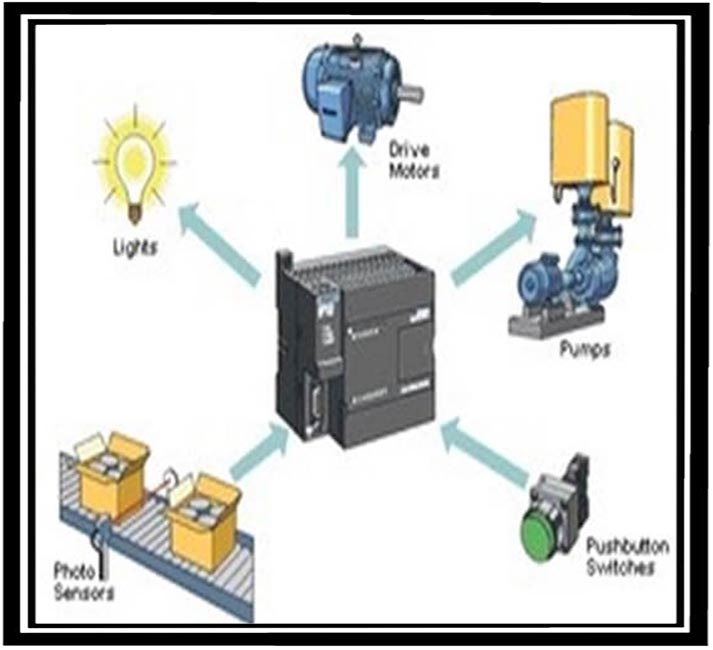PLC Basic Applications ( PLC1) Course
If you would like to become a good Automation Engineer or Technician , you have to be familiar with PLC Programming & its Applications.
As you know, PLC Programming is the Basic Level to step up to the PLC Advanced Training Level & its Applications ( Which is Industrial Applications )
So, once you get the PLC1 Training , you will be to go to the higher level of PLC.

Target Audience:
This program is targeting :
- Industrial, Commercial, Institutional
- Electrical Engineers Electrical Maintenance Tradespeople & Technicians
- Instrumentation And Control Engineers
Language: English/Arabic
PLC Level 1 (Basic Programming) Course Content:
▪ Overview of the S7-1200, S7-1500 automation system
▪ Overview of STEP 7 Basic.
▪ Three programming languages (Ladder logic LAD – Function block diagram FBD – Structured Control Language SCL)
▪ Programming with LAD in general
▪ Execution of the user program.
▪ Data management in the SIMATIC automation system.
▪ Operator control and monitoring with process images.
▪ Installing STEP 7.
▪ Automation License Manager.
▪ Starting STEP 7 Basic.
▪ Portal view.
▪ Help Information system.
▪ The windows of the project view.
▪ Adapting the user interface.
▪ Editing a SIMATIC project.
▪ Structured representation of project data.
▪ Project data and editors for a PLC station.
▪ Creating and editing a project.
▪ Creating and editing libraries.
▪ S7-1500 station components.
▪ S7-1500 CPU modules.
▪ S7-1200 station components.
▪ S7-1200 station components.
▪ Integrated I/O.
▪ PROFINET connection.
▪ Status LEDs.
▪ SIMATIC Memory Card.
▪ Signal modules (SM).
▪ Digital I/O modules.
▪ Communication modules (CM)
▪ Power module (PM)
▪ Program elements of ladder logic
▪ Programming with contacts (NO and NC contacts – Consideration of sensor type in ladder logic – Series connection of contacts – Parallel connection of contacts – Mixed series and parallel connections – T branch, open parallel branch in the ladder logic – Negating result of logic operation in the ladder logic – Edge evaluation of a binary tag in ladder logic – OK contact – Comparison contacts )
▪ Properties of the I/O connections
▪ Device configuration (Configuring a station – Adding a PLC station – Arranging modules – Assigning module parameters – Parameterizuation of CPU properties – Addressing input and output signals – Parameterization of digital inputs – Parameterization of digital outputs)
▪ Operands and tags.
▪ Operand areas: inputs and outputs
▪ Operand area bit memory.
▪ Operand area data.
▪ Operand area temporary local data.
▪ Addressing ( Absolute addressing of an operand – Absolute addressing of an operand area – Symbolic addressing – Addressing a tag part – Addressing constants – Indirect addressing)
▪ General information on data types.
▪ Operating modes (STOP mode – STARTUP mode – RUN mode)
▪ Main program
▪ Organization blocks for the main program
▪ Process image update
▪ Cycle time
▪ Reaction time
▪ Stop program execution
▪ Retentive behavior of operands.
▪ Creating a user program.
▪ Program draft.
▪ Program execution.
▪ Nesting depth.
▪ Programming blocks.
▪ PLC tag table (Creating and editing the PLC tag table – Defining PLC tags – Editing a PLC tag table – Exporting and importing a PLC tag table – Constants tables)
▪ Simple and negated coils
▪ Set and reset coil
▪ Retentive response due to latching
▪ Edge evaluation with pulse output in the ladder logic.
▪ Multiple setting and resetting (filling of bit field) in the ladder logic
▪ Programming with Q boxes in the ladder logic.
▪ Arrangement of Q boxes in the ladder logic.
▪ Memory boxes in the ladder logic.
▪ Edge evaluation of current flow.
▪ Example of binary scaler in the ladder logic.
▪ Scanning for signal states “1” and “0”, result of the scan
▪ Negating the result of the logic operation, NOT contact
▪ AND function, series connection.
▪ OR function, parallel connection.
▪ Exclusive OR function, non-equivalence function.
▪ Simple and negated coil, assignment.
▪ Single set and reset.
▪ Multiple setting and resetting.
▪ Dominant setting and resetting, memory boxes.
▪ Time functions ( Starting IEC timer functions in the ladder logic with coils – Controlling IEC timer functions in the ladder logic with Q boxes – Pulse generation TP – On-delay TON – OFF delay TOF – Accumulating ON delay TONR)
▪ Counter functions (Up counter CTU – Down counter CTD – Up-down counter CTUD – Controlling IEC counter functions in the ladder logic with Q boxes)
▪ Connecting a programming device to the PLC station (IP addresses of the programming device – Assigning an IP address to the CPU module)
▪ Switching on the online mode.
▪ Transferring project data.
▪ Loading project data for the first time.
▪ Testing the user program.
if you would like to get more information please register . .
Jelecom Egypt
Jelecom is an Egyptian Company which has professional Engineers for Engineering Projects and it provides Technical Training and Solutions for both Engineers and Technicians in Industry & Academy
Contact Us
🗺️Address:
Building No. 28, July 26 Street, downtown, in front of the High Court, Banque Misr Building – Cairo, Egypt.
📱Tel ( For Training ):
01011981001
01022612092
01022612094
01022612095
📱Tel ( For Sales ):
01001605695
01008636386
01000480103
01000480104
📧E-Mail :
info@jelecom.com
